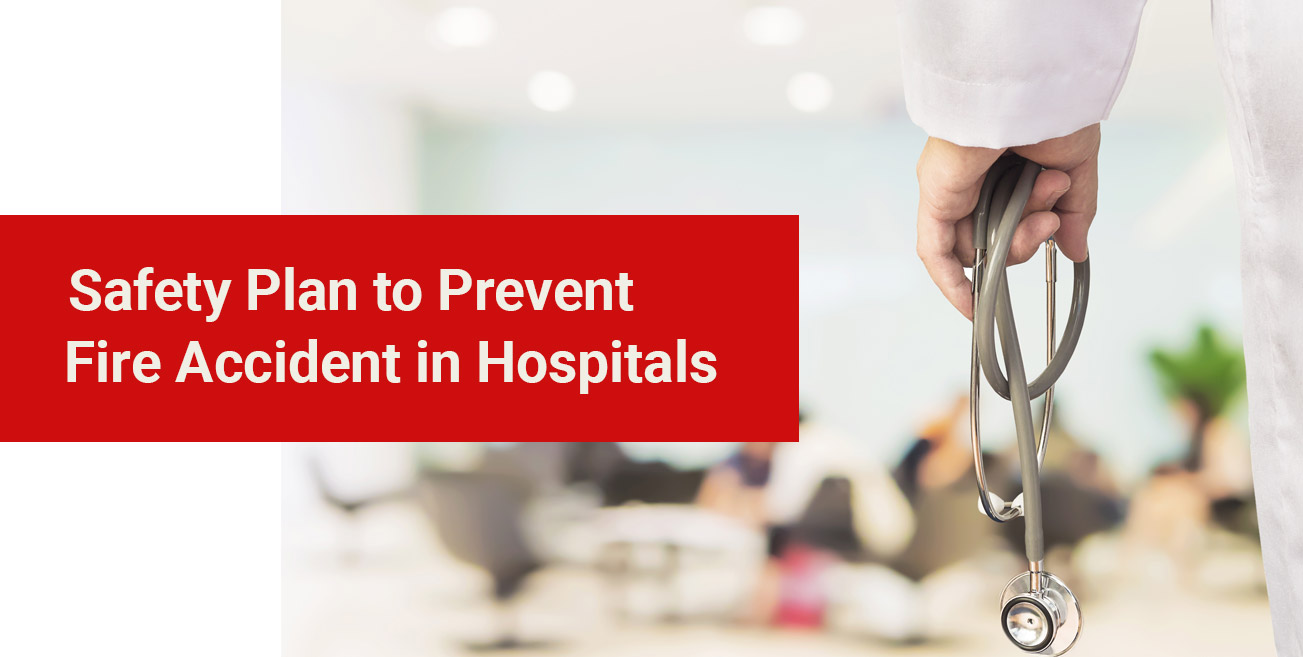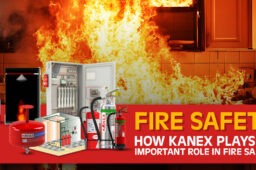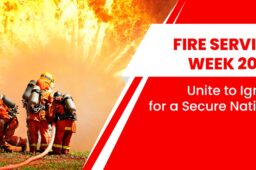Hospital fire safety: Prevention, Equipment & Safety Plan
- January 24, 2022
Fire safety in hospitals is not optional—it is a critical responsibility that protects vulnerable patients, essential medical equipment, and healthcare staff. Hospitals operate in high-risk environments where oxygen levels, electrical systems, and flammable materials can rapidly escalate a fire incident. Implementing strong fire safety protocols ensures hospitals remain safe, compliant, and operational at all times.
This guide explains everything healthcare facilities must implement to improve fire safety in hospitals and reduce life-threatening risks.
Why Fire Safety in Hospitals Matters
Fire safety in hospitals is more important than in any other building because hospitals contain:
- Patients who cannot evacuate independently
- Critical care units (ICU, NICU, OT)
- Oxygen lines and medical gases
- Expensive and sensitive equipment
- High-traffic areas with complex layouts
A fire emergency can:
- Endanger lives
- Shut down lifesaving services
- Damage medical infrastructure
- Break hospital accreditation
- Lead to legal consequences
Effective hospital fire safety minimizes these risks and ensures quick, coordinated action during emergencies.
Mandatory Regulations for Fire Safety in Hospitals
Hospitals must follow strict fire safety regulations, including:
1. NFPA 101 – Life Safety Code
Defines hospital requirements for:
- Safe exit routes
- Smoke control
- Fire-resistant materials
- Evacuation plans
2. National Building Code (NBC Part 4, India)
Covers:
- Sprinkler systems
- Electrical safety
- Emergency exits
- Compartmentation
3. NABH Fire and Safety Guidelines
Requires hospitals to:
- Conduct fire audits
- Maintain fire records
- Train all staff
- Perform regular drills
4. Local Fire Department Norms
Includes:
- Fire NOC
- Equipment inspection
- Fire pump testing
Compliance ensures strong fire safety in hospitals and avoids penalties.
Fire Risk Assessment: The First Step to Hospital Fire Safety
A proper fire risk assessment helps identify hazards and improve fire safety in hospitals. Hospitals must evaluate:
High-risk zones
- Operation theaters
- ICUs
- Laboratories
- Kitchen areas
- Electrical rooms
- Pharmacy & chemical storage
The assessment should check for:
- Fire load levels
- Proper extinguisher placement
- Functional smoke detectors
- Clear exit paths
- Medical gas safety
- Staff awareness
Risk assessments must be conducted annually and updated after any building changes.
Essential Fire Safety Equipment Hospitals Must Install
To strengthen fire safety in hospitals, the following equipment is essential:
Fire Detection Systems
- Smoke detectors
- Heat detectors
- Multi-sensor alarms
- Manual call points
Fire Suppression Systems
- Automatic sprinklers
- Water mist systems
- Clean agent fire suppression (for ICUs, server rooms, OTs)
- Portable fire extinguishers
- Fire hydrants and hoses
Evacuation & Emergency Essentials
- Illuminated exit signs
- PA systems
- Fire escape maps
- Emergency lighting
- Evacuation chairs, stretchers, wheelchairs
Proper maintenance ensures everything works during an emergency.
How to Create an Effective Fire Safety Plan for Hospitals
Every hospital must have a clear and actionable fire safety plan, including:
1. Fire Detection
- Alarm activation
- Smoke and heat detection
- Central monitoring
2. Fire Response
- Raising the alarm
- Initial fire control
- Communication between departments
3. Patient Evacuation
- Horizontal evacuation (preferred)
- Vertical evacuation if needed
- Transfer of critical-care patients
- Movement to safe zones
4. Fire Suppression
- Using correct extinguishers
- Activating sprinklers
- Shutting off oxygen supply (when necessary)
A strong plan ensures smooth coordination and saves lives.
Staff Training & Fire Drills: Core of Hospital Fire Safety
Training hospital staff is one of the most important aspects of fire safety in hospitals.
Staff should learn:
- How to identify fire hazards
- How to use extinguishers (PASS technique)
- How to help immobile patients
- How to follow evacuation routes
- How to respond calmly to alarms
Fire Drill Requirements
- Conduct drills every 3–6 months
- Include day & night shifts
- Simulate real conditions (smoke, blocked exits)
- Provide feedback and corrective actions
Trained staff = lower risks + faster evacuation.
Patient Evacuation Procedures in Hospitals
Evacuating patients safely is the biggest challenge in hospital fire safety.
Patient categories
- Critical patients (ICU, ventilated)
- Wheelchair-dependent patients
- Ambulatory patients
Evacuation essentials
- Use stretchers, wheelchairs, evacuation chairs
- Keep fire exits unobstructed
- Follow horizontal evacuation whenever possible
- Assign staff to handle critical-care patients
These measures ensure safe, fast, and organized evacuation.
Maintenance & Inspection for Hospital Fire Safety
For strong fire safety in hospitals, equipment must be regularly maintained.
Weekly
- Check extinguishers
- Inspect fire exits
Monthly
- Smoke detector checks
- Sprinkler system review
Quarterly
- Fire pump testing
Annually
- Full fire safety audit
- Fire NOC renewal
- Staff training refresh
Proper documentation is mandatory for compliance.
Technology That Enhances Fire Safety in Hospitals
Modern innovations improve fire safety through:
Smart Fire Detection Systems
- AI-enabled detectors
- Faster and accurate smoke identification
- Reduced false alarms
Advanced Suppression Technologies
- Water mist systems
- Clean agent systems
- Automatic activation
Integrated Communication Systems
- Mobile alerts
- PA announcements
- Intelligent building management systems
Technology allows hospitals to respond instantly and prevent disasters.
Conclusion: Strong Fire Safety in Hospitals Saves Lives
Fire safety in hospitals is a non-negotiable requirement. With vulnerable patients, medical gases, and sensitive equipment, hospitals must adopt comprehensive fire safety strategies.
By implementing:
- Risk assessments
- Staff training
- Fire drills
- Reliable detection systems
- Safe evacuation procedures
- Modern technology
- Regular inspections
Hospitals can protect lives, maintain operational continuity, and meet national and international safety standards.
For trusted fire protection solutions and hospital-grade equipment, Kanex Fire is committed to supporting healthcare facilities with reliable, compliant, and high-performance fire safety systems.









